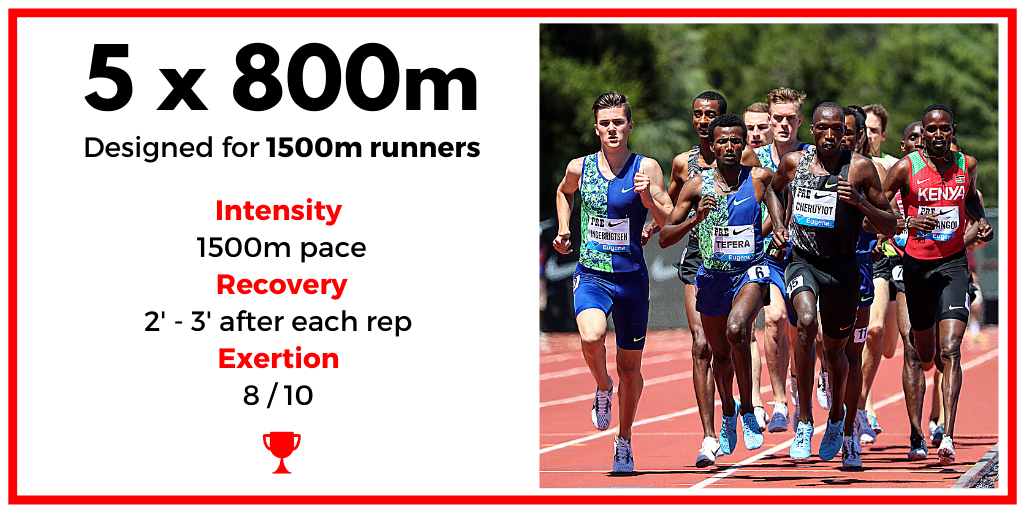Workout of the Day: 5 x 800m
5 x 800m
Intensity — 1500m pace
Recovery — 2 - 3 minutes after each rep
Exertion — 8/10
Context & Details
This session is the natural extension of the classic 10 x 400m workout for the miler.
A key focus in a runner’s training should be to increase their event specific Speed Endurance. In order to do this, the runner must have enough raw speed to run a competitive pace in their event, as well as enough raw endurance to last the distance of their event.
Training typically progresses from an initial General period of development, where qualities like speed, endurance, strength, etc. are all developed individually before combined in more specific periods of training.
For example, if a runner wants to break 4:00 in the mile but can’t run faster than 15” for 100m once, they have a basic speed problem. Their training would then focus first on upgrading basic speed ability so they can run sub-14” or faster for 100m, and once that is achieved, working to enhance their specific Speed Endurance so they can run 15“/100m speed, or slightly faster, without stopping for one mile.
The inverse situation would be if an athlete can run sub-13” for 100m but cannot run 1 mile at any pace without needing to take breaks to “catch their breath.” In this scenario, the runner has an endurance problem. So you would focus on training the runner’s endurance qualities before implementing a program of speed-endurance enhancement.
This is all pretty simple and straightforward. However, sometimes confusion arises by just how much speed and endurance a runner needs for their event. While there are a lot of ideas out there, I tend to stick with a couple of basic heuristics for most runners.
For the 800m - 10,000m events, if an athlete can perform a continuous run of 3x their event distance, at any pace, then they have enough raw endurance for their event. And if a runner can run 200m as fast, or faster, than their goal pace for their event, then they have adequate raw speed.
When both of these conditions are met, then the limiting performance factor tends to be event specific speed-endurance.
Effective training, therefore, should focus on increasing frequency (which indirectly increases volume) of practice at event specific speeds. Canova calls this “study of the pace.” The more exposure a runner studies their pace in situations which mirror race day, the better they’ll become at it. This is one reason why the majority of high school runners get so much better at their events as a season progresses, every meet is a high quality “study of the pace/event” opportunity.
This doesn’t mean you should do workouts every day. Don’t forget, the stressors of a workout damage the body, and the recovery period following a workout is where repair and adaptation occur. Improvement only happens during recovery. No rest, no growth. But when you do workout in the Specific period, prioritize frequent dense exposures of your specific target race pace, like 5 x 800m at 1500m pace.
This workout advances the speed-endurance qualities introduced in the 10 x 400m session by prolonging uninterrupted exposures to 1500m speed in 800m segments. The beauty of interval training is that you are able to do more volume of work at a pace because you get small breaks between reps. Two and half miles of running at your target 1500m speed will upgrade running economy, event specific lactate-threshold velocity, vVO2 Max, and resistance to fatigue. It will also build confidence and concentration which will help the miler sustain their focus (and pace) through the dreaded 3rd lap lull.

